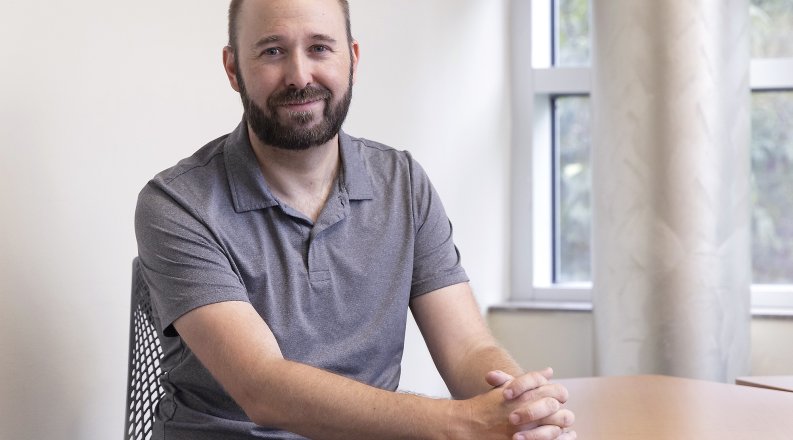Daniel Mulqueen’s dissertation research led him to develop graphene out of biomass. He then examined the ways graphene interacts with plastics in composite materials, and how we can use those interactions to make stronger and more conductive materials.
Mulqueen, a renewable carbon material scientist and pyrolisis engineer, recently defended his Ph.D. in mechanical engineering at the Batten College of Engineering and Technology. Oleksandr Kravchenko, associate professor in the Department of Mechanical and Aerospace Engineering, was his advisor.
“Dan is an exemplary person and researcher - not only did he complete his direct Ph.D. as an off-campus student after being in industry for a number of years, but he was also very productive in his research, which focused on adopting novel sustainable plant-based graphene for structural composites, and he did all of this while working full-time!” said Kravchenko.
Mulqueen, an online student based in Charleston, South Carolina, is no stranger to the subject. He has been working in research and development of renewable carbon materials and thermal decomposition technologies since 2007.
Mulqueen works as chief technology officer for Climate Robotics, a startup focused on using innovative methods – including advanced robotics and automation – to fight climate change.
Q: Can you explain your dissertation subject very simply?
A: There is a nanomaterial made of carbon called graphene that looks like sheets (or platelets) a few atoms thick, and a few hundred or thousand atoms long/wide. I developed a way to make graphene out of biomass (plants, etc.), and in my dissertation, I look at the ways graphene interacts with the plastics in composite materials (like carbon fiber composites) and how we can use those interactions to make stronger more conductive materials.
Q: What is the practical use of the research?
A: Anything that uses composite materials, but especially aircraft and electric cars that need compost materials with better electrical conductivity.
Q: Why is this research important?
A: People have been talking about graphene as the "next big thing" for about 15 years. One big issue is that it is hard to work with, because it's bigger than a typical molecule and smaller than most conventional materials, so you have to be able to consider how it works on different scales. Beyond that, conventional graphene (and most nanomaterials), take a lot of energy to produce and so they have a large carbon footprint. Being able to make graphene from plants makes it a lot more environmentally friendly.
Q: What led to your interest in nanotechnology and graphene?
A: I started working on nanoscale molecular motors when I did my undergrad at the Colorado School of Mines. I got really excited about thinking about how things work on the nanoscale. I've been working professionally for the last 15 years on making carbon materials from plants, and so making a plant-based graphene was the most interesting thing to me.
Q: Why did you choose ODU?
A: I had been working for over a decade after finishing my B.S. and I had been looking for the right space to pursue my Ph.D. I got connected with ODU on a project in Virginia and it was clear it was the right place as far as the work people were doing at the Batten College of Engineering and Technology.
Q: Is there a particular professor here that was influential?
A: Dr. Kravchenko, my advisor, was especially influential, along with the whole Composites Modeling and Manufacturing group and Dr. Kravchenko had worked with graphene and carbon nanomaterials in composites before.
Mulqueen lives in Charleston, South Carolina with his wife, two dogs and three cats. He plays the guitar a little bit and over the pandemic did a full teardown and restoration on a 1969 Triumph Daytona, a motorcycle that belonged to his late father.



